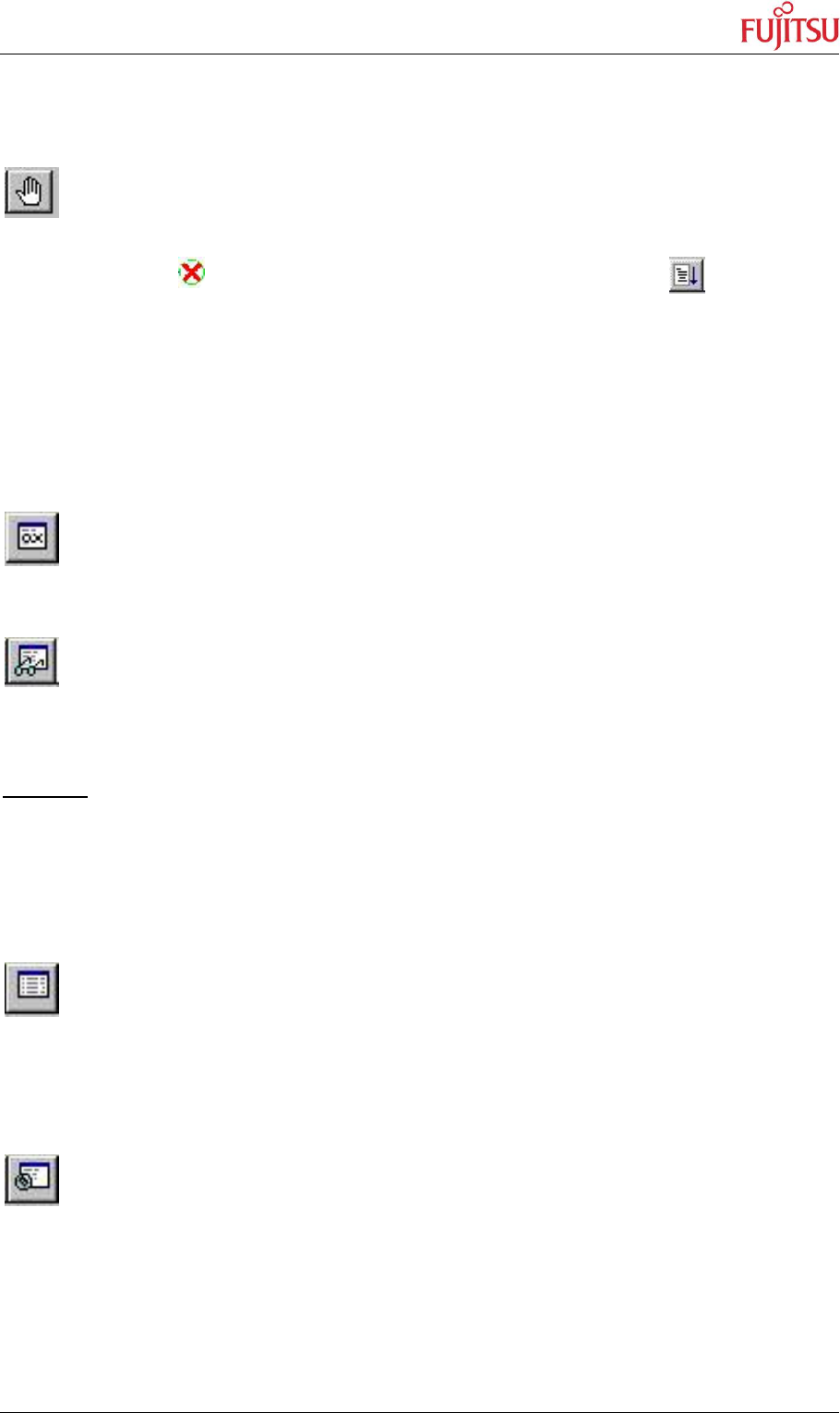
STARTERKIT MB91360
Chapter 4 Details of the included Monitor-Debugger
© Fujitsu Microelectronics Europe GmbH - 17 - UG-910006-13
4.2 Advanced debugger features
TOGGLE BREAKPOINT: Sets or deletes breakpoint at the current source line or :
To set or delete a breakpoint, click the circles at the beginning of a source-line. A
indicates an active breakpoint. Hit “go” to execute until this line. A list of all breakpoints
can be found under the “Debug – Breakpoint” menu. 255 Software-Breakpoints (using TRAP
replacement) are possible.
To set breakpoints at positions which are currently not visible (e.g. because the source-
window of that module is not open), you can also enter a symbolic label directly in the
“Breakpoint” menu. Example: Enter “main” in the address-field and confirm. The new
breakpoint will automatically be assigned to the address of the “main()”-function.
REGISTER WINDOW: Displays the CPU-register window. Updated registers appear
in red. Setup in context menu defines which Registers should be displayed.
WATCH WINDOW: Displays the current variables to „watch“. Double-click on any
variable in your code then specify watch in context menu to add to watch window. All listed
variables in a watch window can be displayed in any number format. Use Edit to directly
change the contents.
Example: Open the Leddemo1-Project and execute until you see the first LED-pattern. Then
double-click on PDRJ in the debugger-window and select „watch“ in the context-menu. The
watch-window will appear and PDRJ will be added to any existing variables. Select PDRJ in
the watch window and choose „Edit“. Enter any value and confirm. You will now see the (8-
Bit) value displayed on the LEDs directly as binary code. This is because PDRJ is the output
latch of the LED-port (J).
MEMORY WINDOW: Displays memory areas in various formats defined by Setup
(context menu). Changing of address/data is possible when debugger is not executing.
Note : If you make changes to the ROM-area (080000..0FFFFF) it can affect the currently
loaded program !
DISASSEMBLER: Disassembles the contents of the code memory beginning from
actual PC position and displays the result in a separate window. Individual
assembler-lines can be changed using the „inline assemble“-function.


















